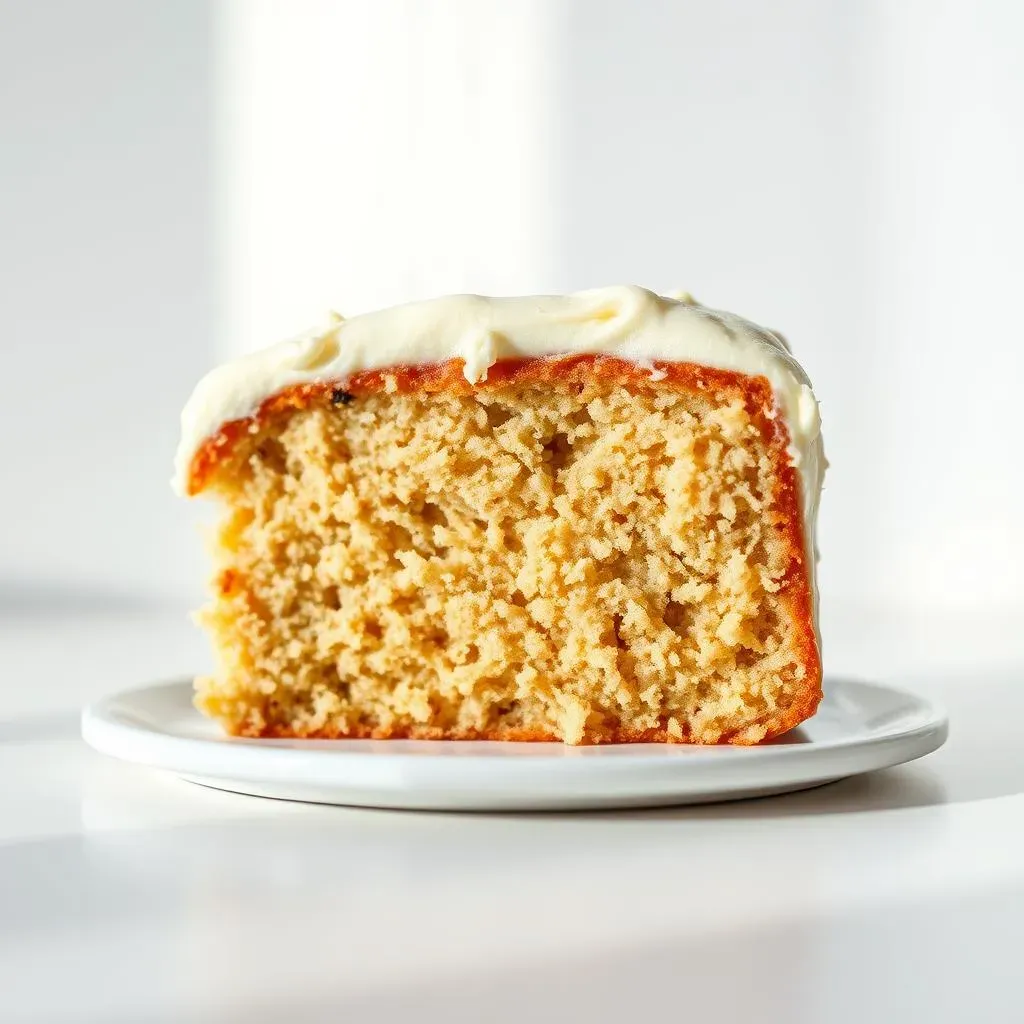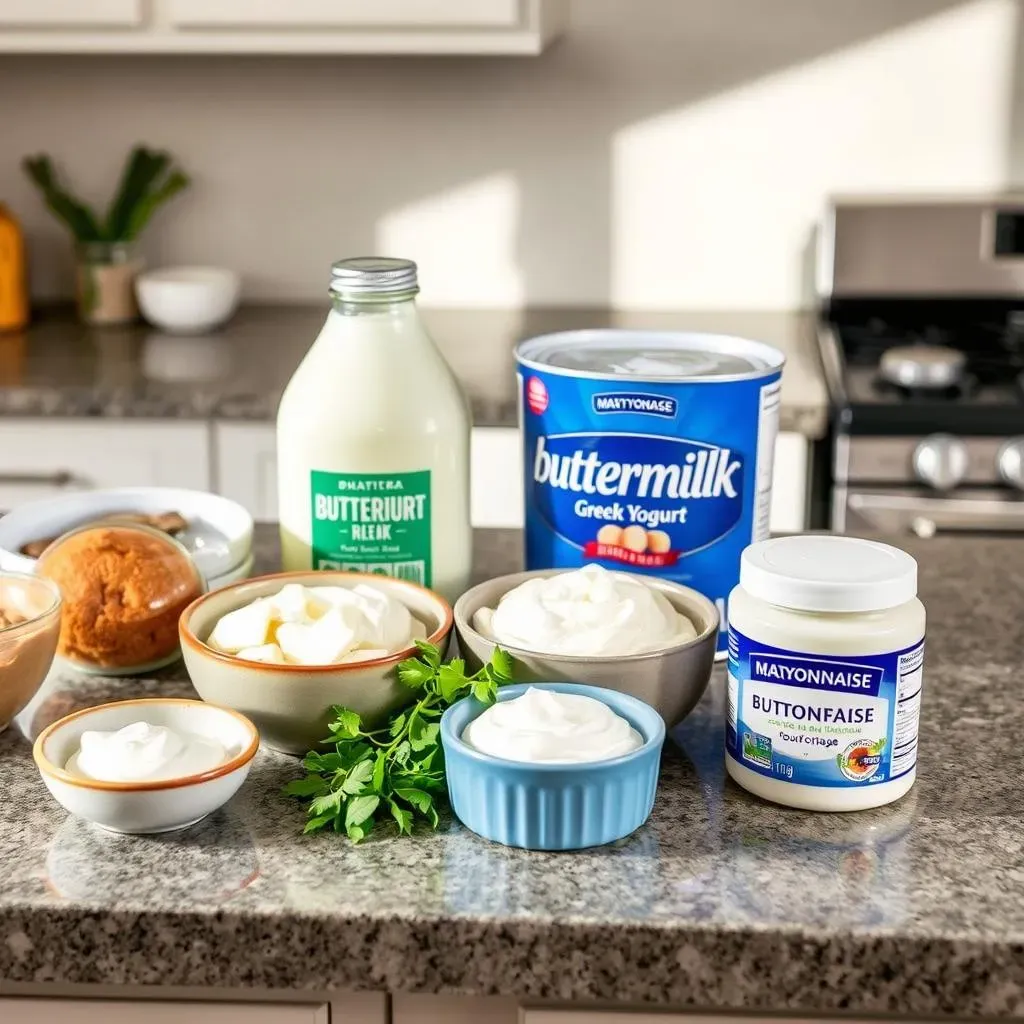Table of Contents
Ever found yourself mid-recipe, staring into the fridge, only to realize you're out of sour cream? It's a kitchen crisis we've all faced. The recipe calls for that tangy, creamy goodness, but all you've got is milk. Can you just swap them? Well, not exactly. Milk and sour cream are totally different beasts. But don't panic! This article is your guide to navigating this culinary conundrum. We'll explore why a straight "substitute milk for sour cream" doesn't work and what you can use instead. We’ll also look at how to make those stand-ins work their magic in your dishes. So, whether you're whipping up a cake or a creamy sauce, get ready to learn some simple swaps that'll save the day, and maybe even make your cooking better. Let's jump right in!
Why You Can't Just Swap Milk for Sour Cream

Why You Can't Just Swap Milk for Sour Cream
The Great Texture Divide
so you're staring at your recipe, milk in one hand, and a sour cream-shaped hole in your heart. You think, "They're both creamy, right?" Wrong. Milk is thin, like water with a bit of richness. Sour cream, on the other hand, is thick and luxurious, thanks to the magic of lactic acid bacteria working on cream. It's like comparing a puddle to a cloud. This difference in texture is crucial, especially in baking. You wouldn't use water instead of butter, would you? Same logic applies here. The thickness of sour cream is what gives baked goods their moisture and a tender crumb. Milk just won't cut it.
Think about it like this: if you’re making a cake, milk will add liquid, but it won't provide the same structure or richness that sour cream does. The fat content is significantly different too. Sour cream is much higher in fat, which contributes to that lovely, moist texture and adds a bit of tang to the flavor profile. Milk is mostly water, with a small amount of fat, so it’s not going to give the same results. It's like trying to build a house with just water and a few bricks. The structure will be flimsy, and it definitely won't look or feel the same as a house built with proper materials.
Feature | Milk | Sour Cream |
|---|---|---|
Texture | Thin, liquid | Thick, creamy |
Fat Content | Low | High |
Tanginess | Mild | Tangy |
Use In Baking | Adds moisture | Adds moisture, richness, and structure |
The Flavor Factor
It's not just about texture, though. The taste is a whole other ball game. Milk has a mild, almost neutral flavor. Sour cream, as the name suggests, is tangy. That tang is what brings a certain zing to dishes, whether it's a dollop on a baked potato or a key ingredient in a cake. The acidity in sour cream also interacts with baking soda, helping your cakes and muffins rise nicely. Milk just doesn't have that power. It's like trying to play a guitar solo with a kazoo; it'll make noise, but it won't have the same effect.
So, while both might seem like creamy white liquids, they play completely different roles in the kitchen. Using milk as a straight substitute for sour cream would be like using a paintbrush instead of a spatula; it's just not the right tool for the job. You might get away with it in some situations, but the results won't be what you're hoping for. You'll miss that distinctive tang and the rich texture that sour cream provides. This is why it is so important to know some good substitutes, which we'll look at next. It's all about making sure your recipes turn out great, even when you're in a pinch.
Smart Substitutes for Sour Cream When You're Out of Milk

Smart Substitutes for Sour Cream When You're Out of Milk
so you've accepted that milk isn't a sour cream doppelganger. Now what? Don't worry, the kitchen isn't a wasteland of despair. You've got options! Think of it like this: you're a secret agent, and sour cream is your mission, but you've got to use disguises. Greek yogurt, for instance, is a fantastic stand-in. It's thick, tangy, and has a similar protein content, making it a great choice for both baking and topping. It's like sour cream's slightly more health-conscious cousin. Then there's buttermilk, which is thinner, but adds a lovely tang and can work in many recipes, especially if you're trying to replicate a lighter texture. Don't underestimate the power of a good substitution. It's all about adapting and making the best of what you have.
Another great option is créme fraîche, it is very similar to sour cream, and can be used in a 1:1 ratio for most recipes. It is richer and more expensive, but for a last minute substitution, it works very well. You can use a combination of yogurt and a little lemon juice to mimic the tang, or even a bit of mayonnaise for the fat content, though this is better for savory dishes. The trick is to understand what qualities of sour cream you need, and then find a substitute that matches those qualities. It's like being a detective, looking for clues in your pantry. Each ingredient has its own superpowers, and it's all about knowing which one to call on when the situation demands it. It's not about perfection, it's about resourcefulness.
Substitute | Texture | Tanginess | Best Uses |
|---|---|---|---|
Greek Yogurt | Thick, creamy | Tangy | Baking, toppings, sauces |
Buttermilk | Thin, liquid | Tangy | Baking, sauces, marinades |
Crème Fraîche | Thick, rich | Mildly Tangy | Baking, toppings, sauces |
Yogurt + Lemon Juice | Variable | Adjustable | Baking, toppings, sauces |
Mayonnaise | Thick, creamy | Mild | Savory sauces, dips |
How to Make Your Substitutes Work Perfectly

How to Make Your Substitutes Work Perfectly
Adjusting for Texture
so you've chosen your substitute, but how do you make sure it actually works? First, let's talk texture. If you're using Greek yogurt and the recipe calls for the thickest sour cream, you're probably good to go, it is a great substitute. But if you're using buttermilk, which is thinner, you might need to tweak things a bit. For baking, consider adding a little extra flour to compensate for the extra liquid. It's like adding a bit of sand to the water to make a better sandcastle, you're just trying to get the right consistency. In sauces, you can simmer it a bit longer to thicken it up or add a touch of cornstarch. The goal is to ensure that your substitute doesn't make your dish too runny or too dense. It's all about finding the right balance, like a good tightrope walker, you don't want it too loose, or too tight.
For example, if you are making a dip and using yogurt instead of sour cream, you may want to drain some of the liquid from the yogurt with a cheese cloth to make it thicker. This step may not be needed if you are using Greek yogurt, but regular yogurt tends to have more liquid in it. If you are using a thinner substitute like buttermilk in a cake recipe, you might consider reducing the amount of other liquids in the recipe, or adding a tablespoon of flour to help soak up the extra liquid. It's always a good idea to start with a little and add more as needed, it's easier to add more than it is to remove it.
Substitute | Texture Adjustment |
|---|---|
Greek Yogurt | May need draining for extra thickness |
Buttermilk | Add extra flour in baking, simmer in sauces |
Crème Fraîche | Usually no adjustment needed |
Yogurt + Lemon Juice | Adjust liquid, use thick yogurt |
Mayonnaise | Use sparingly in baking, better in savory dishes |
Balancing the Flavor
Next up, flavor! If you're using plain Greek yogurt, you might notice it lacks the tang of sour cream. No problem, a squeeze of lemon juice or a dash of vinegar can do the trick. Start with a small amount and taste as you go. It's like adding spices to a curry, a little at a time to get the perfect flavor profile. If you are using mayonnaise as a substitute in a savory dish, you'll want to be careful, as it has a very distinct flavor and it can become too overpowering, use it sparingly. The goal is to mimic the tangy, slightly acidic taste of sour cream without overpowering the other flavors in your dish. Don't be afraid to experiment and adjust things to your preference.
Remember, baking is a science, but cooking is an art. When you are substituting ingredients, you're essentially adding a twist to the recipe. Sometimes the results are unexpected, but that's part of the fun. It's like being a painter, sometimes you mix colors and create something completely new. Don't be afraid to trust your instincts and taste as you go. If you are using a combination of yogurt and lemon juice, start with a small amount of lemon juice and add more until it matches the tanginess of the sour cream. Each substitute has its own unique flavor profile, and it's all about finding the right balance, and making it work for your recipe.
Wrapping Up Your Sour Cream Substitute Saga
So, while you can't just pour milk in place of sour cream and expect the same results, you're now armed with some solid alternatives. From Greek yogurt to buttermilk, there's a substitute for every situation. Remember, the key is understanding the texture and flavor you're aiming for. With a little experimentation, you can nail that creamy, tangy goodness without ever needing to run to the store. Now go forth and conquer those recipes, and don't be afraid to get a little creative in the kitchen, you might just stumble on your new favorite substitution!